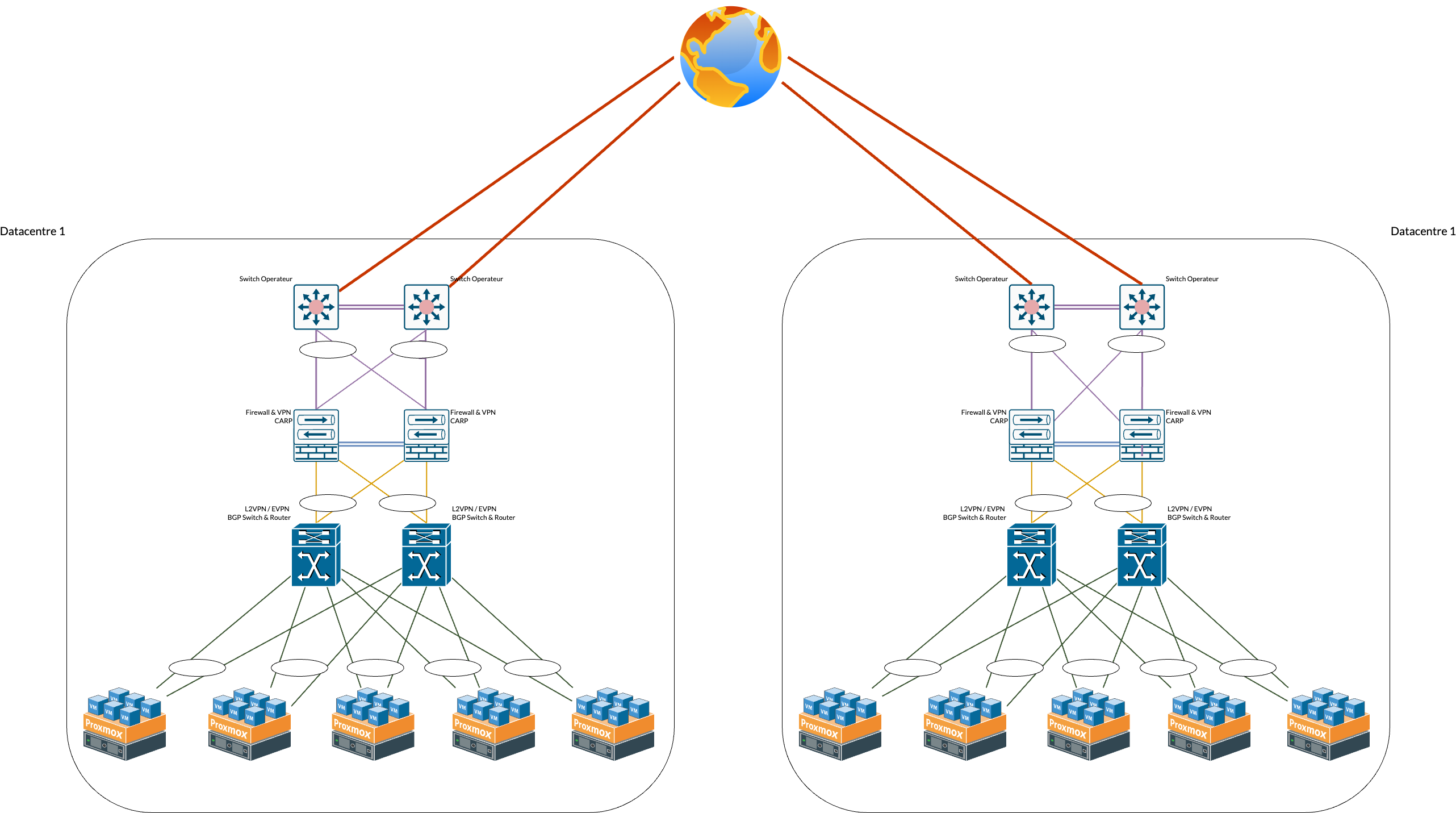Proxmox Multi-Site Redundant Infrastructure Projects
Proxmox software enables the deployment of high-availability multi-site virtualized server infrastructures.
This type of complex configuration addresses the following needs:
- Deployment of redundant Proxmox infrastructures
- Data replication across “n” sites
- CEPH write distribution across multiple sites
- Multi-site HA policy implementation
- Multi-site service continuity implementation
Why Use These Technologies?
Proxmox, combined with FRR and VXLAN, allows deploying an L2VPN EVPN with BGP in a multi-site setup efficiently and cost-effectively. Thanks to Proxmox’s automation and flexibility, data center interconnection is simplified without relying on expensive proprietary solutions. Native VXLAN integration ensures seamless VLAN extension, with precise control via BGP EVPN. Compatibility with Ceph and other networking solutions enhances resilience and scalability. Proxmox thus provides a robust alternative to complex SDN solutions.
Need Assistance with Implementation?
Deploying this type of infrastructure is complex due to the layered protocols and configurations involved.
It is therefore recommended to seek support from DynFi experts to properly handle such deployments.
Some of the technologies to be implemented include:
| Technology | Description |
|---|---|
| BGP | Enables route distribution within the cluster |
| L2VPN EVPN | Extension allowing the use of modern infrastructures like MPLS, VXLAN, and IP |
| VxLAN | Enables extended multi-site LAN (in L2 or L3) |
| ECMP | Provides load balancing and traffic distribution across multiple devices |
| VLAN | For local network segmentation |
| LACP | For link redundancy and fault tolerance |
The company DynFi, Proxmox Gold Partner, is here to support you in these complex Proxmox projects.
Tell Us About Your Projects
If you want to get in touch with us or learn more about our offers, please fill out the form below:





